
|

|
Left: View from the second courtyard looking northwest; detail of colonnade with Osiris pillars--a mummy form with arms crossed holding a flail and scepter |
| |
|
The central staircase was flanked by two granite colossi of Ramses II. What now remains is the pedestal (throne) of the southern statue (the rest of the figure is now in the British Museum) and the head of the northern statue. Head photographed by William J. Sullivan (my husband).
|
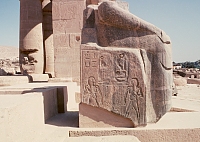
|
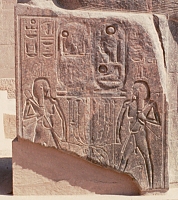
|
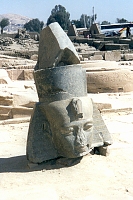
|
| |
|
Views from the portico of the Osiris colonnade (from behind) |
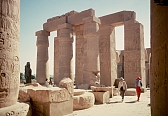
|
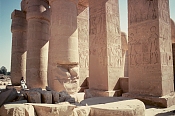
|
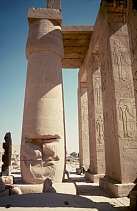
|
| |
|
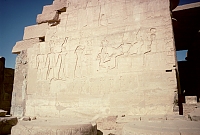
|
The rear wall of the portico--at the top of the stairs from the rear of the second courtyardThe bottom register depicts 11 of Ramses' sons; the middle row (left) shows "the hawk-headed Montu holding the hieroglyph for life before the King's face and (right) the king kneels before the Theban triad while Thoth, who is behind him, writes his years on a palm leaf" (Kamil 89). In the top register Ramses sacrifices to Ptah, while to the right Ramses offers incense to an ithyphallic Min (Haag 313). |
| |
|
Left: The hypostyle hall from the portico (looking west)
Right: Inside the hypostyle hall looking toward the front (east) |
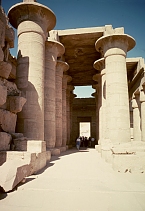
|
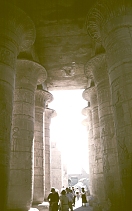
|
| |
|
The hypostyle hall has three aisles with taller columns in the center and lower ones on the sides, thus permitting light to enter through "windows" set up on the architraves of the rows of shorter columns. The hall originally had 48 columns (6 rows of columns) but only 29 stand today.
|
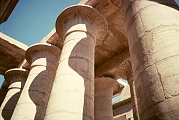
|
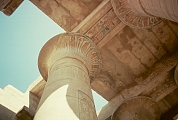
|
Left, center and below: Columns with surviving paint in the hypostyle hallThe taller columns have calyx capitals whereas the short ones have bud capitals. |
| |
|
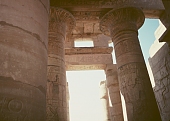
|
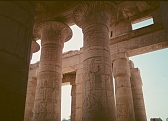
|
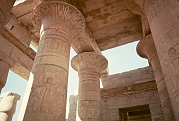
|
| |
|
Reliefs in the hypostyle hall--left: The pharaoh rushing into battle; center; holding a prisoner by the hair; right: the pharaoh worshipping |
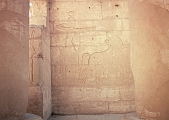
|
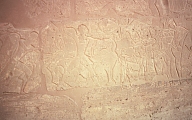
|
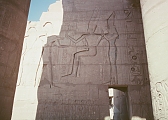
|
| |
|
Left and right: the far west end of the temple (interior and exterior); center: relief depicting the priests bearing the sacred boats of the deities during the Beautiful Feast of the Valley |
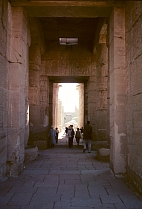
|
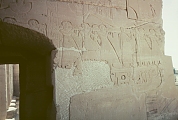
|
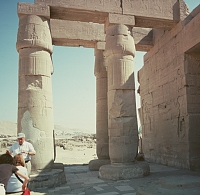
|


 Click here to go to the Egypt Index.
Click here to go to the Egypt Index. Click here to return to index of art historical sites.
Click here to return to index of art historical sites.
 Click here to return to index of artists and architects.
Click here to return to index of artists and architects.
 Click here to return to chronological index.
Click here to return to chronological index.
 Click here to see the home page of Bluffton College.
Click here to see the home page of Bluffton College.
